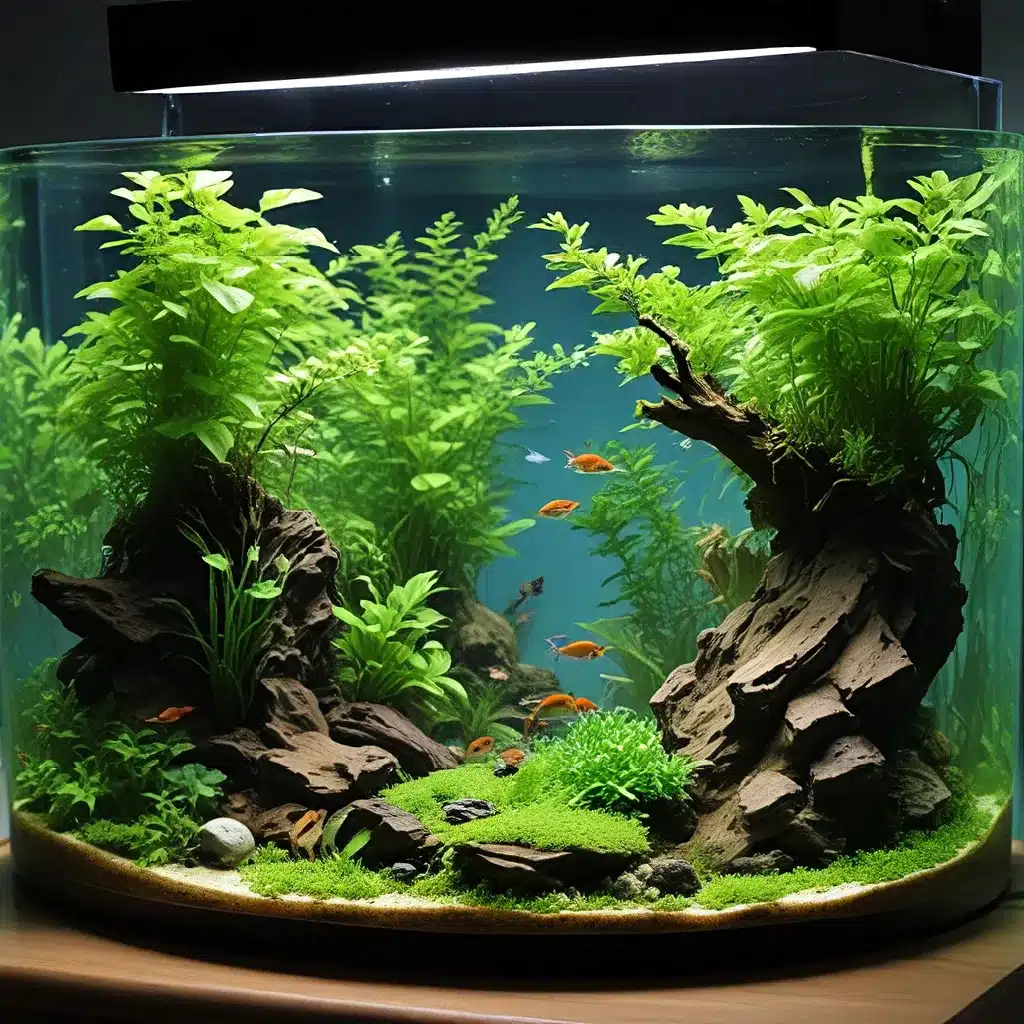
Cultivating an Aquatic Sanctuary: The Art of Aquascaping
Aquascaping is the meticulous art of designing and maintaining an aquatic ecosystem within the confines of an aquarium. It goes beyond simply keeping fish and plants – it’s about crafting a captivating underwater landscape that mirrors the serene beauty of nature. Whether you’re a seasoned aquarist or a newcomer to the hobby, mastering the principles of aquascaping can elevate your tank into a breathtaking, thriving oasis.
At the heart of successful aquascaping lies a deep understanding of the natural habitats and species-specific needs of the inhabitants. By carefully selecting appropriate plants, rocks, and driftwood, you can create a harmonious and visually stunning environment that not only looks stunning but also supports the health and well-being of your aquatic companions.
One of the key aspects of aquascaping is the use of three-dimensional layouts. Rather than simply arranging plants and décor in a flat, two-dimensional manner, skilled aquascapers leverage depth, height, and scale to craft a sense of visual depth and perspective. This approach not only enhances the aesthetic appeal of the aquarium but also provides ample hiding spots, territories, and foraging areas for the fish and invertebrates.
Aquatic Plant Selection: The Foundation of a Thriving Ecosystem
The foundation of any captivating aquascape lies in the careful selection and arrangement of aquatic plants. These living, breathing elements not only contribute to the overall visual appeal but also play a crucial role in maintaining a balanced, healthy ecosystem.
When choosing plants for your aquarium, it’s essential to consider factors such as growth rate, light requirements, and compatibility with the other inhabitants. Fast-growing, oxygenating plants like Riccia fluitans can help maintain water quality, while slow-growing, low-light plants like Java Fern or Anubias can thrive in the shadier areas of your tank.
Arranging the plants in a visually compelling manner is also crucial. Incorporating a variety of textures, colors, and growth habits can create a sense of depth and natural harmony. Positioning taller plants in the back, medium-sized plants in the middle, and shorter, carpeting plants in the foreground can help achieve a three-dimensional, lush landscape.
Water Management: The Foundation for a Thriving Aquarium
Maintaining a healthy, balanced aquarium environment is not merely about aesthetics – it’s about ensuring the long-term well-being of your aquatic inhabitants. Proper water management is the foundation upon which a thriving aquarium ecosystem is built.
Water quality is of utmost importance, as fluctuations in parameters like pH, temperature, and dissolved oxygen can have detrimental effects on the fish and plants. Investing in high-quality filtration systems, regular water changes, and monitoring water chemistry are essential for maintaining a stable, nurturing environment.
In addition to water quality, the flow and circulation within the aquarium play a vital role. Adequate water movement not only helps distribute nutrients and oxygen but also mimics the natural currents found in various aquatic habitats. By strategically positioning your filtration system and powerheads, you can create a harmonious flow that supports the overall health and vitality of your aquarium.
Species-Specific Care: Tailoring Your Aquarium to Thrive
Every aquarium is unique, and the key to success lies in understanding the specific needs and behaviors of the inhabitants. When stocking your aquarium, it’s crucial to research the compatibility of fish, invertebrates, and plants to ensure a balanced and harmonious ecosystem.
For instance, some fish species, such as betta fish, require more individualized care and may thrive better in a dedicated aquarium or a heavily-planted, low-flow environment. Similarly, certain plants may have specific substrate, lighting, or nutrient requirements that need to be met for them to flourish.
By tailoring your aquarium to the unique needs of its inhabitants, you can create a thriving, self-sustaining oasis that not only looks stunning but also provides a nurturing home for your aquatic friends.
Sustainable Aquascaping: Embracing Eco-Friendly Practices
In the pursuit of creating a beautiful and captivating aquarium, it’s important to consider the environmental impact of our actions. Sustainable aquascaping practices not only benefit the aquatic ecosystem but also contribute to the larger goal of environmental stewardship.
One key aspect of sustainable aquascaping is the responsible use of materials and resources. This includes opting for eco-friendly, non-toxic decorations, using energy-efficient lighting and filtration systems, and minimizing the use of single-use plastics.
Another important consideration is the responsible sourcing and handling of aquatic life. Choosing fish, plants, and invertebrates from reputable, ethically-minded suppliers can help ensure the well-being of the organisms and support the development of a thriving, sustainable industry.
By embracing sustainable aquascaping practices, aquarium enthusiasts can create beautiful, nature-inspired environments while also contributing to the protection and preservation of our shared aquatic ecosystems.
Conclusion: Immerse Yourself in an Aquatic Oasis
Transforming your aquarium into a thriving, visually captivating habitat is a deeply rewarding journey. By mastering the art of aquascaping, understanding species-specific care, and embracing sustainable practices, you can create an aquatic oasis that not only delights the senses but also nurtures the well-being of your aquatic companions.
Whether you’re upgrading an existing tank or starting a new aquarium, the team at King Aquarium is here to guide you every step of the way. With our expertise, passion, and commitment to sustainable aquarium practices, we can help you bring your aquatic vision to life and elevate your space into a serene, natural haven.
Embark on this aquascaping adventure and witness the transformation of your aquarium into a lush, thriving oasis that will captivate you and your guests for years to come.

